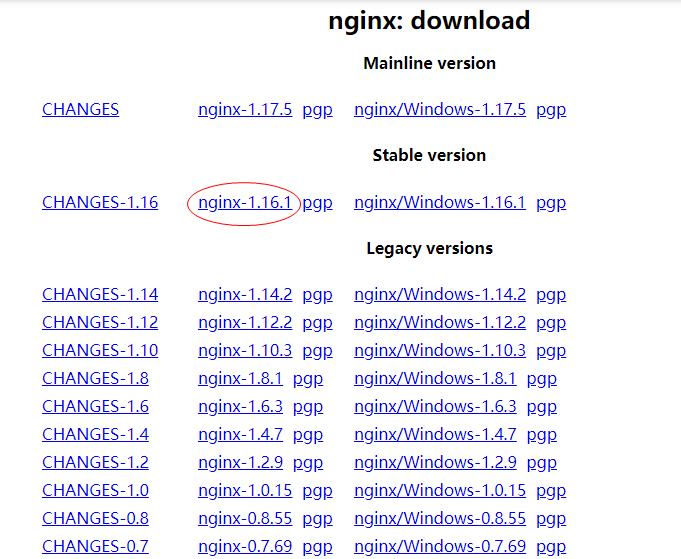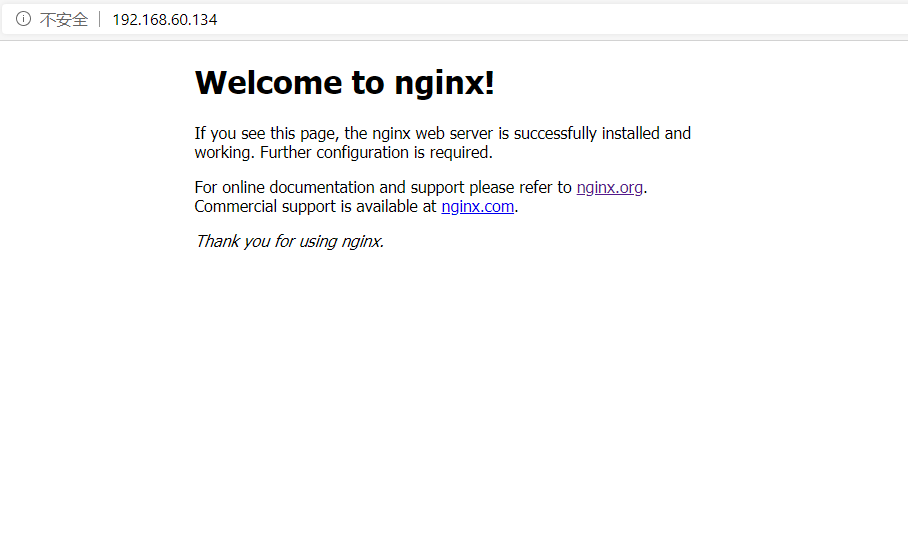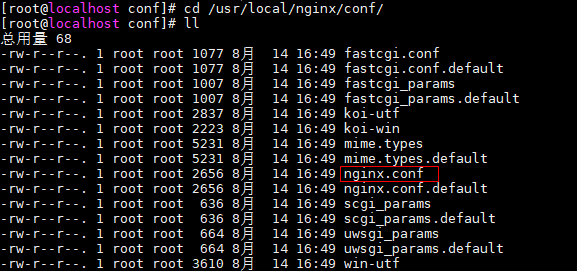Appearance
Nginx 在 Linux 上的使用
Nginx 安装与使用
下载 Nginx
Nginx 下载地址:http://Nginx.org/en/download.html

安装 Nginx 环境
sh
$ yum install gcc-c++
$ yum install -y pcre pcre-devel
$ yum install -y zlib zlib-devel
$ yum install -y openssl openssl-devel对于 gcc,因为安装 Nginx 需要先将官网下载的源码进行编译,编译依赖 gcc 环境,如果没有 gcc 环境的话,需要安装 gcc。
对于 pcre,prce(Perl Compatible Regular Expressions)是一个 Perl 库,包括 Perl 兼容的正则表达式库。Nginx 的 http 模块使用 pcre 来解析正则表达式,所以需要在 Linux 上安装 pcre 库。
对于 zlib,zlib 库提供了很多种压缩和解压缩的方式,Nginx 使用 zlib 对 http 包的内容进行 gzip,所以需要在 Linux 上安装 zlib 库。
对于 openssl,OpenSSL 是一个强大的安全套接字层密码库,囊括主要的密码算法、常用的密钥和证书封装管理功能及 SSL 协议,并提供丰富的应用程序供测试或其它目的使用。Nginx 不仅支持 http 协议,还支持 https(即在ssl协议上传输http),所以需要在 Linux 安装 openssl 库。
编译和安装 Nginx
- 解压 Nginx 到 /usr/local/
sh
$ cd /usr/local/
$ tar -zxvf /Nginx-1.16.1.tar.gz- 应用默认配置
sh
$ cd Nginx-1.16.1/
$ ./configure- 编译并安装(应用默认配置)
sh
$ make && make install启动 Nginx
- 默认配置文件启动
sh
$ cd /usr/local/Nginx/
$ ./sbin/Nginx
# 查看 Nginx 是否启动
$ ps -ef | grep Nginx
root 7671 1 0 11:46 ? 00:00:00 Nginx: master process ./sbin/Nginx
nobody 7672 7671 0 11:46 ? 00:00:00 Nginx: worker process- 指定配置文件启动
sh
$ cd /usr/local/Nginx/
$ cp ./conf/Nginx.conf Nginx.conf
$ ./sbin/Nginx -c Nginx.conf
# 查看 Nginx 是否启动
$ ps -ef | grep Nginx
root 7671 1 0 11:46 ? 00:00:00 Nginx: master process ./sbin/Nginx -c Nginx.conf
nobody 7672 7671 0 11:46 ? 00:00:00 Nginx: worker process
关闭 Nginx
- 快速停止
sh
$ cd /usr/local/Nginx/
$ ./sbin/Nginx -s stop
# 此方式相当于先查出Nginx进程id再使用kill命令强制杀掉进程。不太友好。- 平缓停止
sh
$ cd /usr/local/Nginx/
$ ./sbin/Nginx -s quit
# 此方式是指允许 Nginx 服务将当前正在处理的网络请求处理完成,但不在接收新的请求,之后关闭连接,停止工作。Nginx 的配置
Nginx.conf 的文件位置及主体结构

nginx
#user nobody;
worker_processes 1;
#error_log logs/error.log;
#error_log logs/error.log notice;
#error_log logs/error.log info;
#pid logs/Nginx.pid;
events {
worker_connections 1024;
}
http {
include mime.types;
default_type application/octet-stream;
#log_format main '$remote_addr - $remote_user [$time_local] "$request" '
# '$status $body_bytes_sent "$http_referer" '
# '"$http_user_agent" "$http_x_forwarded_for"';
#access_log logs/access.log main;
sendfile on;
#tcp_nopush on;
#keepalive_timeout 0;
keepalive_timeout 65;
#gzip on;
server {
listen 80;
server_name localhost;
#charset koi8-r;
#access_log logs/host.access.log main;
location / {
root html;
index index.html index.htm;
}
#error_page 404 /404.html;
# redirect server error pages to the static page /50x.html
#
error_page 500 502 503 504 /50x.html;
location = /50x.html {
root html;
}
# proxy the PHP scripts to Apache listening on 127.0.0.1:80
#
#location ~ \.php$ {
# proxy_pass http://127.0.0.1;
#}
# pass the PHP scripts to FastCGI server listening on 127.0.0.1:9000
#
#location ~ \.php$ {
# root html;
# fastcgi_pass 127.0.0.1:9000;
# fastcgi_index index.php;
# fastcgi_param SCRIPT_FILENAME /scripts$fastcgi_script_name;
# include fastcgi_params;
#}
# deny access to .htaccess files, if Apache's document root
# concurs with Nginx's one
#
#location ~ /\.ht {
# deny all;
#}
}
# another virtual host using mix of IP-, name-, and port-based configuration
#
#server {
# listen 8000;
# listen somename:8080;
# server_name somename alias another.alias;
# location / {
# root html;
# index index.html index.htm;
# }
#}
# HTTPS server
#
#server {
# listen 443 ssl;
# server_name localhost;
# ssl_certificate cert.pem;
# ssl_certificate_key cert.key;
# ssl_session_cache shared:SSL:1m;
# ssl_session_timeout 5m;
# ssl_ciphers HIGH:!aNULL:!MD5;
# ssl_prefer_server_ciphers on;
# location / {
# root html;
# index index.html index.htm;
# }
#}
}